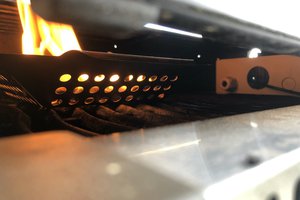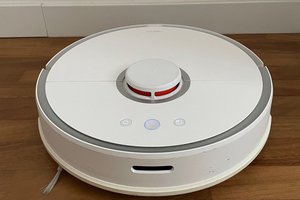Introduction
In this project, I will show an easy way to get started with TinyML: implementing a Machine Learning model on an Arduino board while creating something cool: a gesture recognition system based on an accelerometer.
To make the experiment simpler, the system is designed to recognize only two gestures: a punch and a flex movement (in the data science field, a binary classification).
The biggest challenge of this experiment is trying to run the prediction model on a very tiny device: an 8-bit microcontroller. To achieve this, you can use Neuton.
Neuton is a TinyML framework. It allows to automatically build neural networks without any coding and with a little machine learning experience and embed them into small computing devices. It supports 8, 16, and 32-bit microcontrollers.
The experiment is divided into three steps:
- Capture the training dataset
- Train the model using Neuton
- Deploy and run the model on Arduino
Setup
The gesture recognition system is composed by:
- A microcontroller:Arduino Mega 2560
- An accelerometer sensor: GY-521 ModuleThis module is built around the InvenSense MPU-6050: a sensor containing, in a single IC, a 3-axis MEMS accelerometer and 3-axis MEMS gyroscope.Its operation is very precise since it contains for each channel an accurate digital converter. It can to capture the values of the X, Y, and Z axes at the same time. Communication with MCU takes place using the I2C interface.
GY-521 is powered with the 5V and GND pins of the Arduino Mega power section, while for data communication the I2C pins are used (Pin 20 and Pin 21).The remaining pins are optional and not useful for this application.
To verify if the GY-521 module is correctly supplied, connect the USB cable of the Arduino board and check if the LED mounted on the sensor board is turning on.
After verifying the sensor power supply, check if the I2C communication is working properly by downloading the Adafruit MPU6050 Arduino library and opening the “plotter” example.
Upload the example sketch on the Arduino board, open the “Serial Plotter” within the Tools menu, set 115200 in the baud drop-down menu, and “shake” the sensor board. The expected result will be the following:
Now, the system is ready to collect accelerometer and gyroscope data.
1. Capture training data
The first step to building the predictive model is to collect enough motion measurements.This set of measures is called training dataset and it will be used to train the Neuton neural network builder.
The easiest way to achieve this is to repeat several times the same two motions (punch and flex), by capturing acceleration and gyroscope measurements and storing the result in a file.To do this, you create an Arduino sketch dedicated to sensor data acquisition. The program will acquire the measurements of each motion and will print the sensor measurements output on the serial port console.
You will perform at least 60 motions: 30 for the first movement (punch) and 30 for the second one (flex). For each motion, you will acquire 50 acceleration and 50 gyroscope measures in a 1 second time window (Sampling time: 20ms —50Hz). In this experiment, 60 motions are enough. By increasing the number of motion measurements, you can improve the predictive power of the model. However, a large dataset can lead to an over-fitted model. There is no “correct” dataset size, but a “trial and error” approach is recommended.
The serial port output of the Arduino sketch will be formatted according to Neutontraining dataset requirements.
Below, Arduino program for dataset creation:
- IMU Sensor initialization and CSV header generation:
#define NUM_SAMPLES 50
Adafruit_MPU6050 mpu;
void setup() {
// init serial port
Serial.begin(115200);
while (!Serial) {
delay(10);
}
// init IMU sensor...
Read more »

 alex.miller
alex.miller
 Stefan Blattmann
Stefan Blattmann
